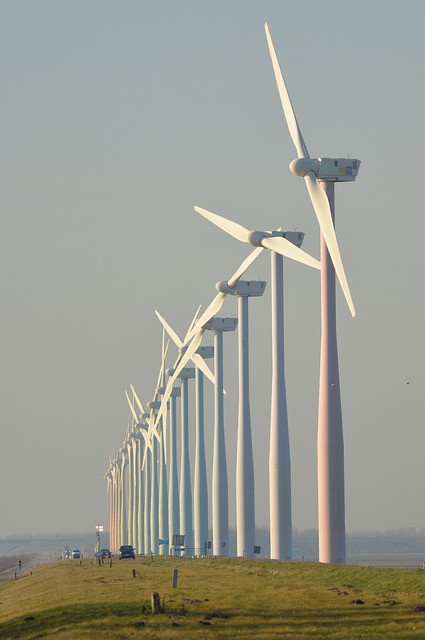It is possible to have a portfolio which profitably invests in alternative energy funds. “Green” energy production is expected to be a multi-billion industry by 2017.
The most recently developed wind-turbine technologies have brought us wind-produced energy which is more cost efficient as well as more widespread. More state-of-the-art wind energy technologies are typically more market competitive with conventional energy technologies. Wind energy production is a growing technology, and companies engaged in it would make up an excellent part of a growth or aggressive growth portfolio.
Next to consider are solar cell, or photovoltaic cell, technologies. These are to be found implemented in pocket calculators, private property lights, and other areas. More and more they find their way onto the roofs of housing and commercial buildings and building complexes. Cost is falling. Their energy efficiency (the ratio of the amount of work needed to cause their energy production versus the actual energy production) is steadily on the rise. As an example, the conversion efficiency of silicon cells has increased from a mere four percent in 1982 to over 25% for the latest technologies. Photovoltaic cells create absolute zero pollution as they are generating electrical power. However, photovoltaic cellls are not presently as cost effective as “utility produced” electricity. “PV” cells are not [capable at present for producing industrial-production amounts of electricity due to their present constraints on space. However, areas where photovoltaic cell arrays could be implemented are increasingly available. In sum, costs are going down while efficiency is rising for this alternative fuel technology.
Many alternative energy investment portfolio advisors are confident that alternative energies derived from currents, tidal movement, and temperature differentials are poised to become a new and predominant form of clean energy. The French are actually fairly advanced at hydro power generation, and numerous studies are being made in Scotland and the US along these sames lines. Some concerns center around the problems with the deterioration of metals in salt water, marine growth such as barnacles, and violent storms which have all been disruptions to energy production in the past. However, these problems for the most part seem to be cured through the use of different, better materials. Ocean-produced energy has a huge advantage because the timing of ocean currents and waves are well understood and reliable.
Investments in hydro-electric technology have grown in the last two decades. Hydro-electric power is clean; however, it’s also limited by geography. While already prominent as power generation, the large, older dams have had problems with disturbing marine life. Improvements have been made on those dams in order to protect marine life, but these improvements have been expensive. Consequently, more attention is now being paid to low-impact “run-of-the-river” hydro-power plants, which do not have these ecological problems.
What is Alternative Energy. Why it’s a wise invest
There is a lot of energy that we can harness if we only seek to research and develop the technologies needed to do so. We can get away from the fossil fuels and the old electrical grids by turning to alternatives to these energy sources.
One of these alternative energy resources is wind power. Wind turbines continue to be developed that are progressively more energy efficient and less costly. “Wind farms” have been springing up in many nations, and they have even become more strategically placed over time so that they are not jeopardizing birds as former wind turbines did.
Another alternative energy resource is the one that is most well known: solar energy. This involves the manufacturing of solar cells which gather and focus the energy given off directly by the sun, and translate it into electricity or, in some cases, hot water. As with wind energy, solar energy creates absolutely zero pollution.
Ocean wave energy is seen by governments and investors as having enormous energy generating potential. A generator in France has been in operation for many years now and is considered to be a great success, and the Irish and Scots are running experimental facilities.
Hydroelectric power has been with us for a while and where it is set up, it is a powerful generator of electricity and cleaner than a grid. However, there are certain limitations to the availability of the right places to set up a large dam. Many run-of-the-river, or small and localized, hydroelectric generators have been set up in recent times due to this limitation.
The reality is, the energy future is green, and investors would do well to put their money out wisely, with that advice in their minds.
